Do I have to go to the end of hand coffee? What happens if you keep the end of the hand-brewed coffee?
Sometimes baristas will be seen brewing coffee, some baristas will wait for all the water in the filter cup to drain after removing the filter cup; some baristas will choose to remove the filter cup when there is still water in the filter cup.
How does this affect coffee flavor?
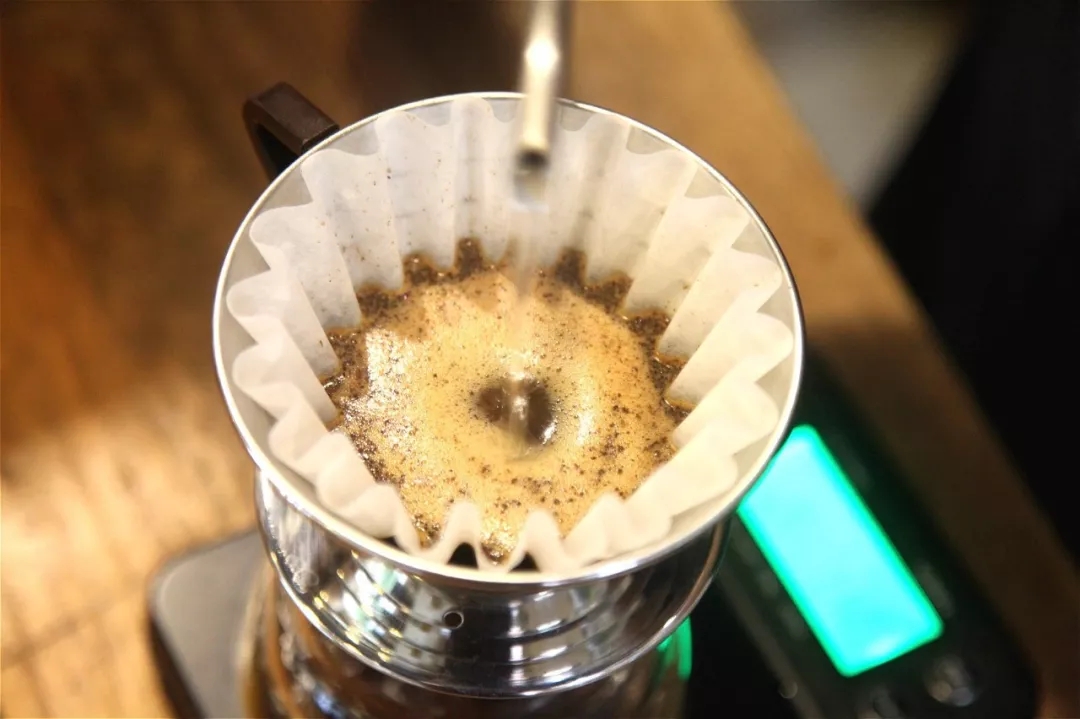
The editor is curious!
So today, let's do an experiment to see the effect of keeping the water at the end and removing the water at the end on coffee flavor. We contrast coffee beans by hedging light, medium, and dark roasts.
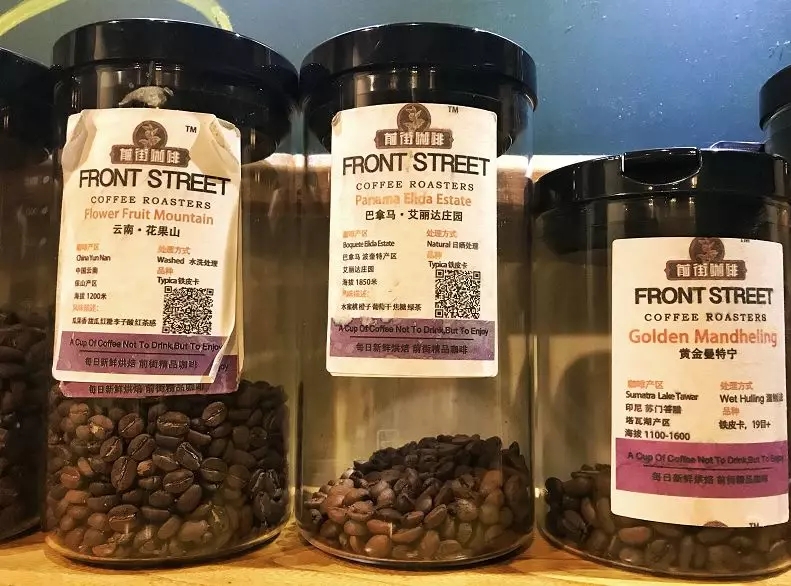
In order to reduce errors, the parameters and techniques of brewing two cups are basically the same.
[Light Bake-Panama Elida]
Panama Elida Estate
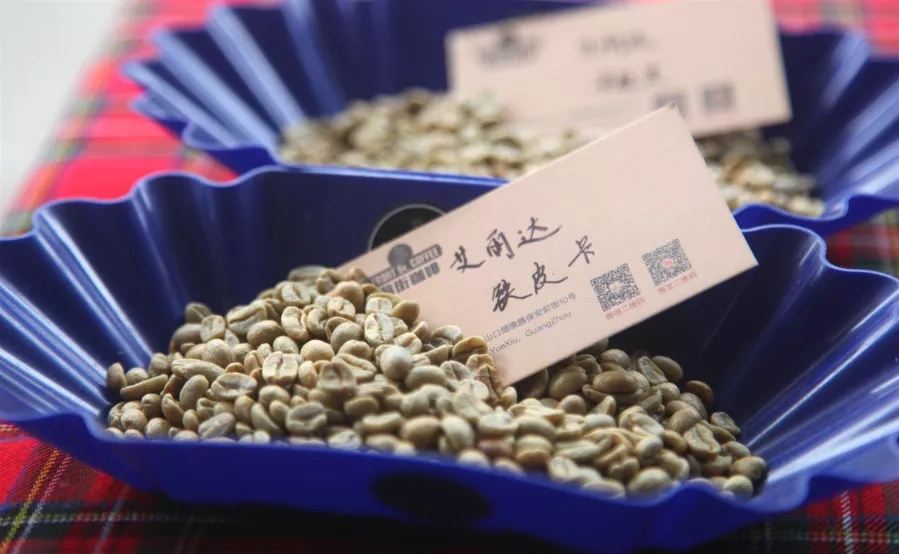
Production area: Panama Boquet production area
Manor: Alida Manor
Altitude: 1850 m
Type: Iron Pickup
Treatment: Sunlight
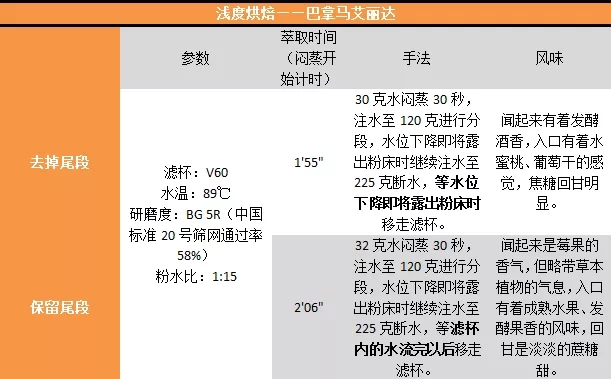
[Remove tail section] Filter cup V60, water temperature 89℃, grinding degree BG 5R (Chinese standard No.20 sieve pass rate 58%), powder-water ratio 1:15, extraction time: 1 55"
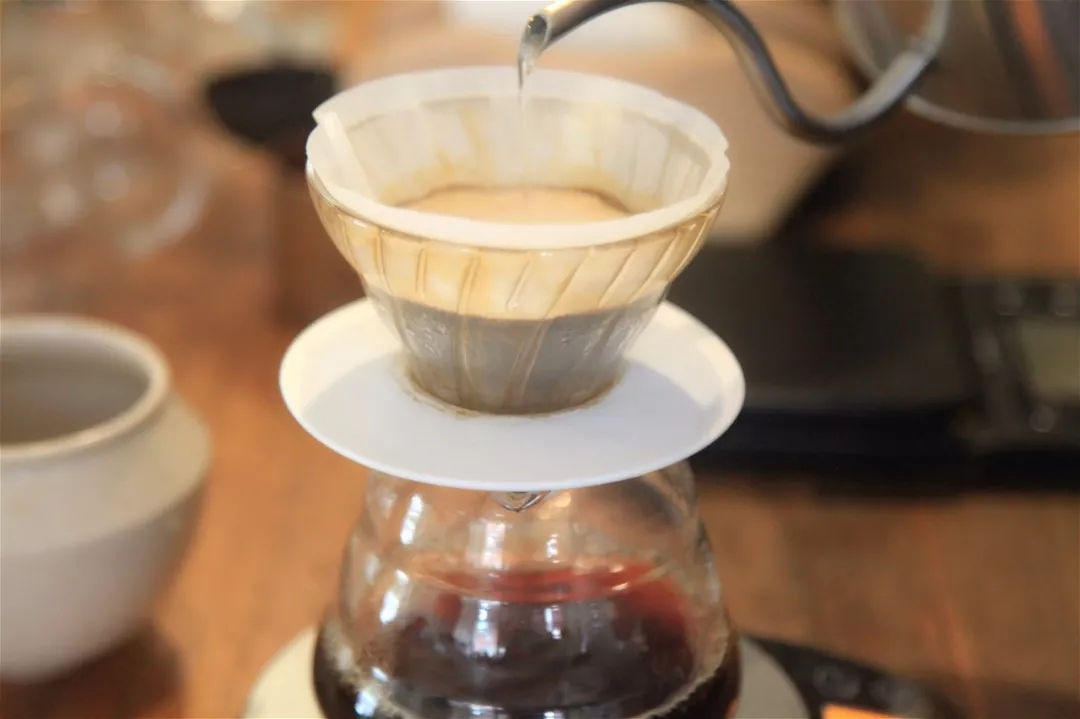
Technique: 30 grams of water steams for 30 seconds, water injection to 120 grams for segmentation, water level drops to 225 grams when the powder bed is about to be exposed, water level drops to 225 grams when the powder bed is exposed, remove the filter cup.
Flavor: It smells of fermented wine, peach and raisin in taste, caramel and sweet.
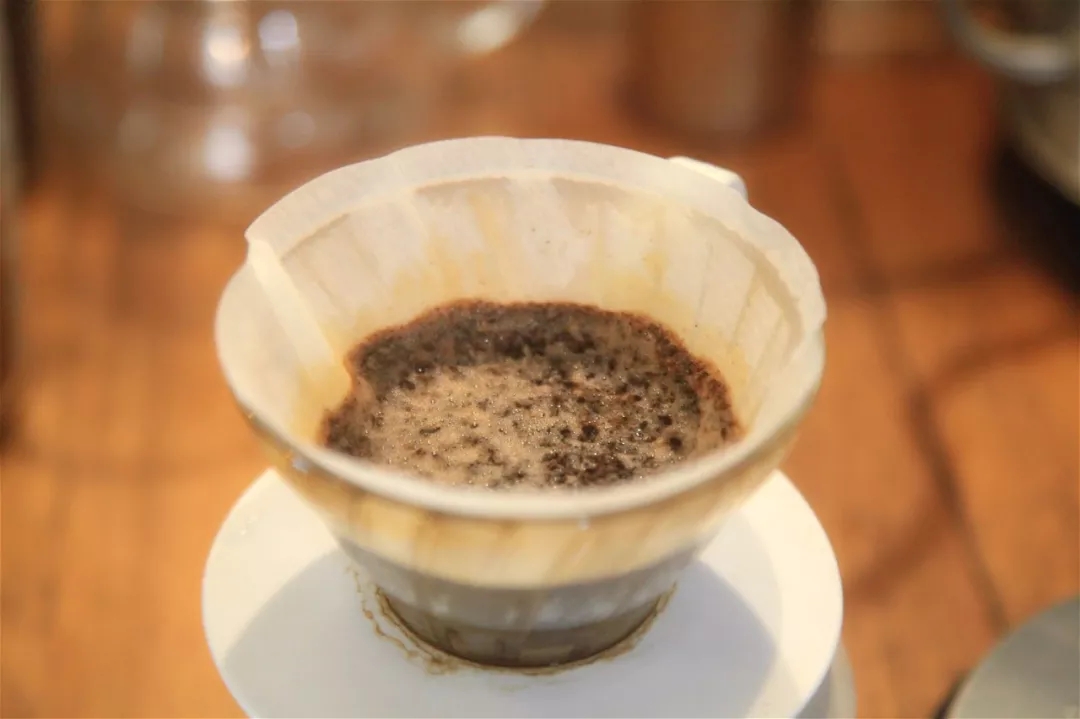
[Reserve tail section] Filter cup V60, water temperature 89℃, grinding degree BG 5R (Chinese standard No.20 sieve pass rate 58%), powder-water ratio 1:15, extraction time: 2 06"
Technique: 32 grams of water steams for 30 seconds, water injection to 120 grams for segmentation, water level drops to expose the powder bed when the water continues to inject water to 225 grams, and so on filter cup water flow after removing the filter cup.
Flavor: It smells of berries, but with a hint of herbs. On the palate, it has ripe fruit, fermented fruity flavors, and a hint of sugar sweetness.
[Medium baking--Yunnan Huaguo Mountain]
Yunnan Huaguo Mountain
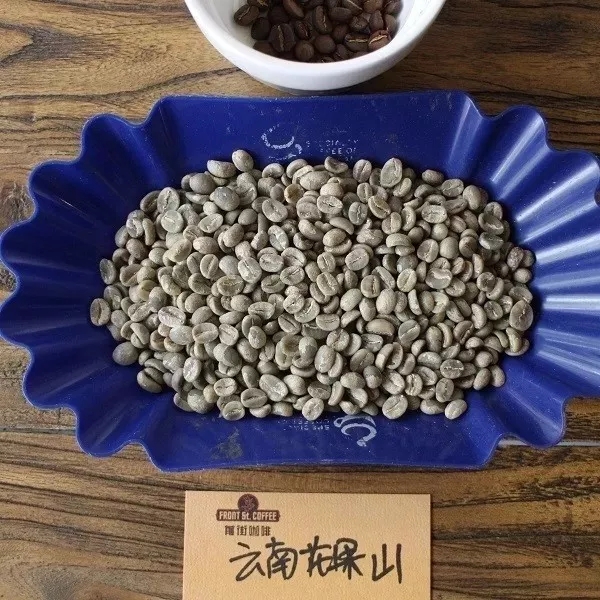
Production area: Yunnan, China
Altitude: above 1200 m
Type: Iron Pickup
Treatment method: washing
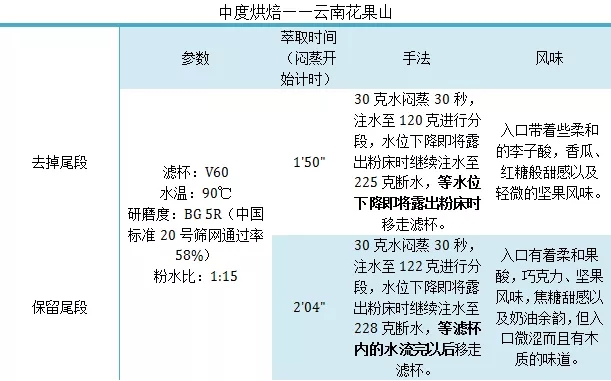
[Remove tail section] Filter cup V60, water temperature 90℃, grinding degree BG 5R (Chinese standard No.20 sieve pass rate 58%), powder-water ratio 1:15, extraction time: 1 50"
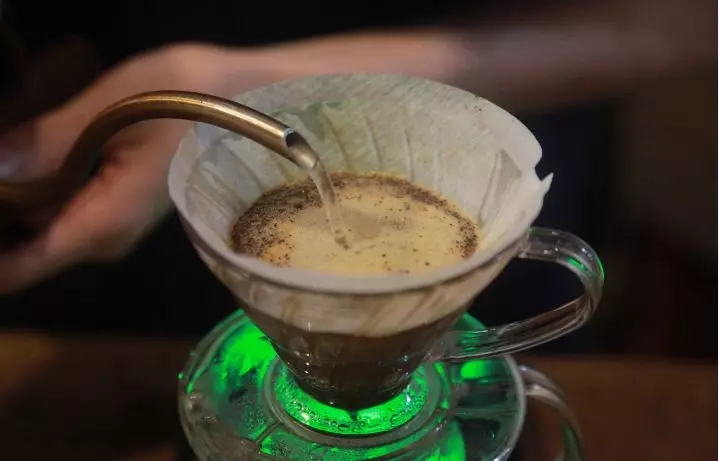
Technique: 30 grams of water steams for 30 seconds, water injection to 120 grams for segmentation, water level drops to 225 grams when the powder bed is about to be exposed, water level drops to 225 grams when the powder bed is exposed, remove the filter cup.
Flavor: On the palate, it has soft plum acidity, melon, brown sugar sweetness and slight nutty flavors.
[Reserve tail section] Filter cup V60, water temperature 90℃, grinding degree BG 5R (Chinese standard No.20 sieve pass rate 58%), powder-water ratio 1:15, extraction time: 2 04"
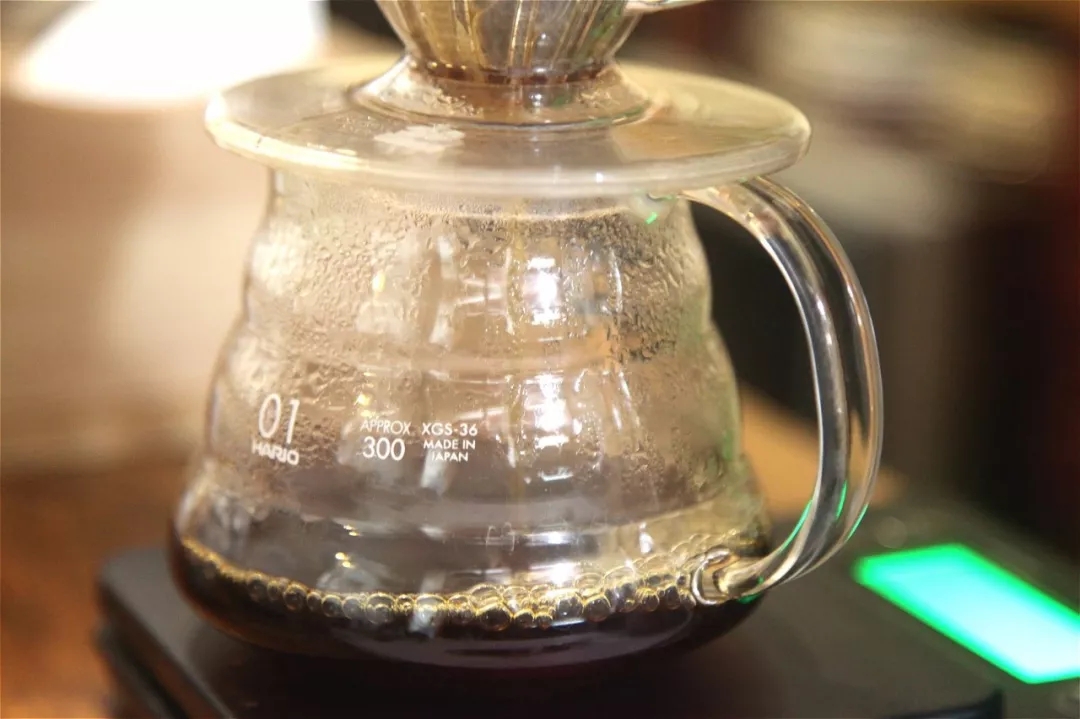
Technique: 30 grams of water steams for 30 seconds, water injection to 122 grams for segmentation, water level drops to expose the powder bed when the water continues to inject water to 228 grams, and so on filter cup water flow after removing the filter cup.
Flavor: Soft acidity, chocolate, nutty flavors, caramel sweetness and creamy finish on the palate, but slightly astringent and woody on the palate.
[Deep Baking--Gold Mandolin]
PWN Gold Mandrine
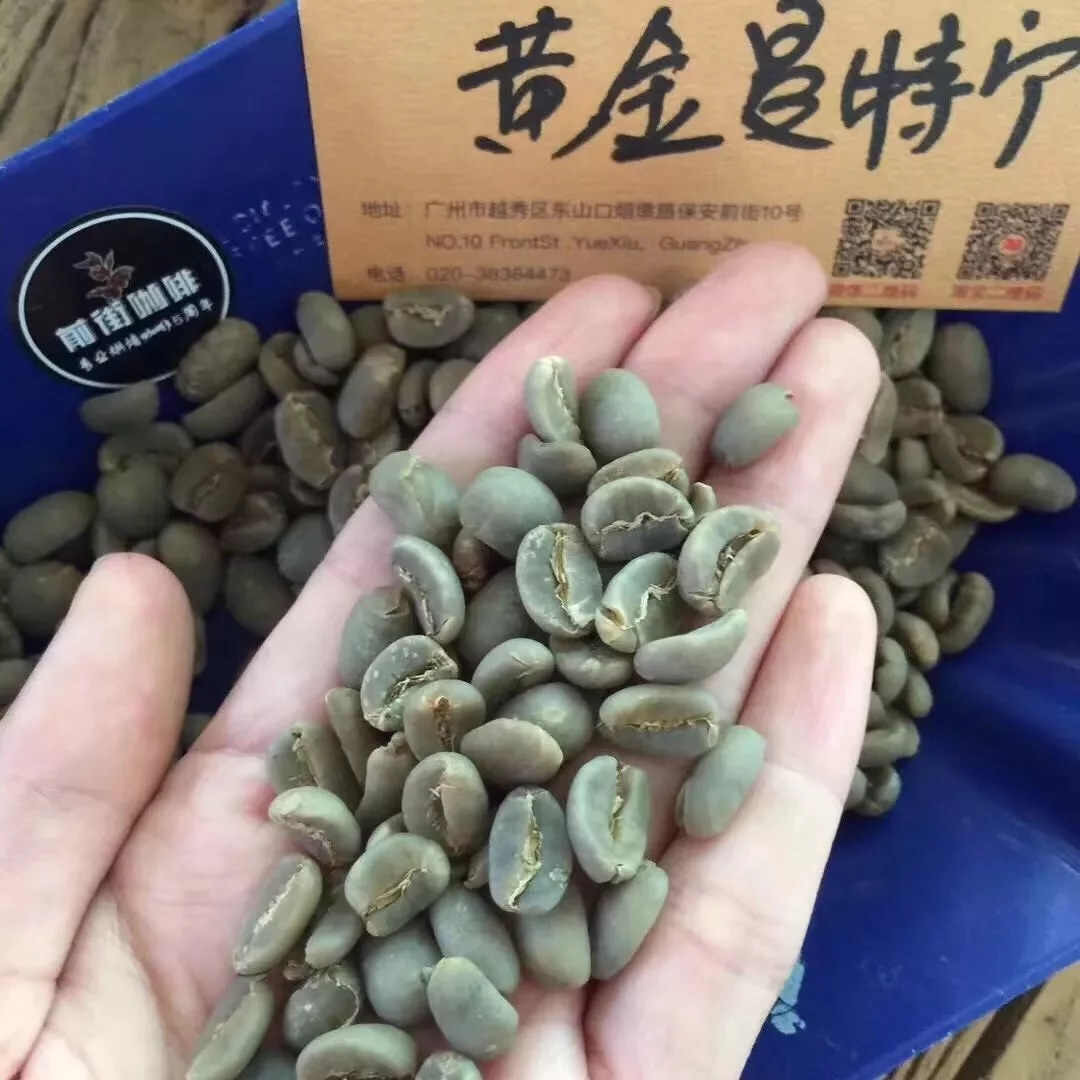
Country: Indonesia
Level: G1· 3 times hand-selected
Company: PWN
Origin: Sumatra
Treatment: wet planing
Altitude: 1100--1600 m
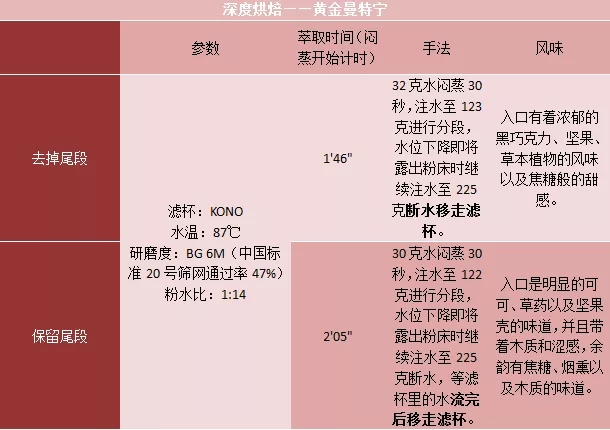
[Remove tail section] Filter cup KONO, water temperature 87℃, grinding degree BG 6M (Chinese standard No.20 sieve pass rate 47%), powder-water ratio 1:14, extraction time: 1 46"
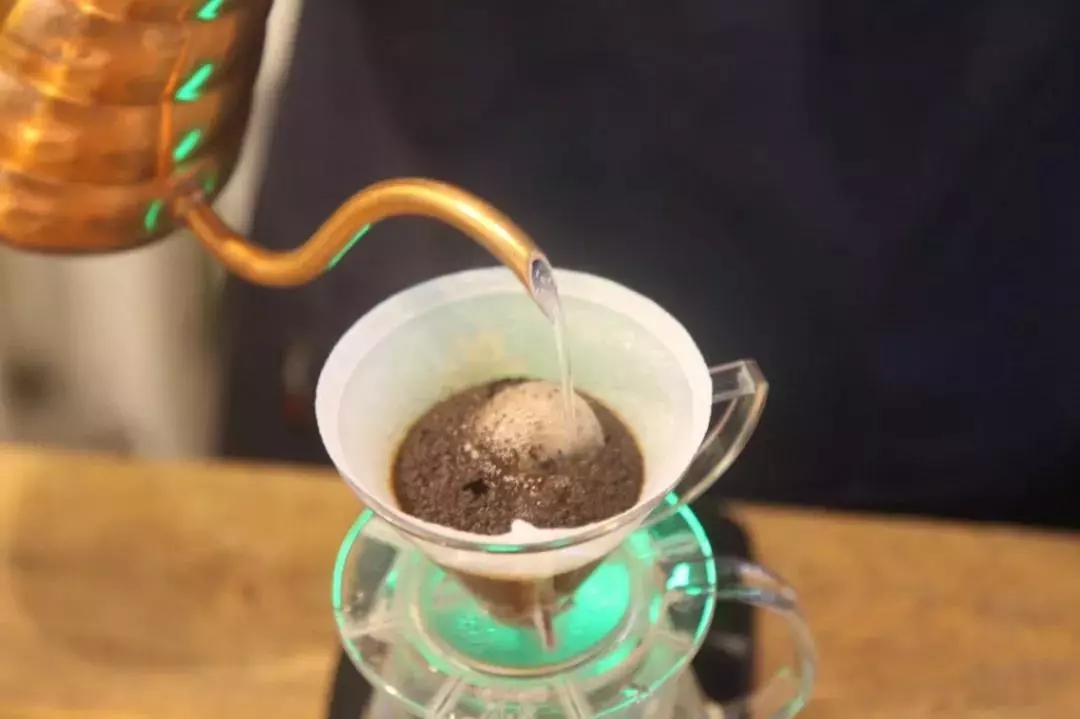
Technique: 32 grams of water steams for 30 seconds, water injection to 123 grams for segmentation, water level drops when the powder bed is about to expose, continue to water injection to 225 grams, cut off water and remove the filter cup.
Flavor: On the palate, it has intense dark chocolate, nutty, herbal flavors and caramelized sweetness.
[Reserve tail section] Filter cup KONO, water temperature 87℃, grinding degree BG 6M (Chinese standard No.20 sieve pass rate 47%), powder-water ratio 1:14, extraction time: 2 05"
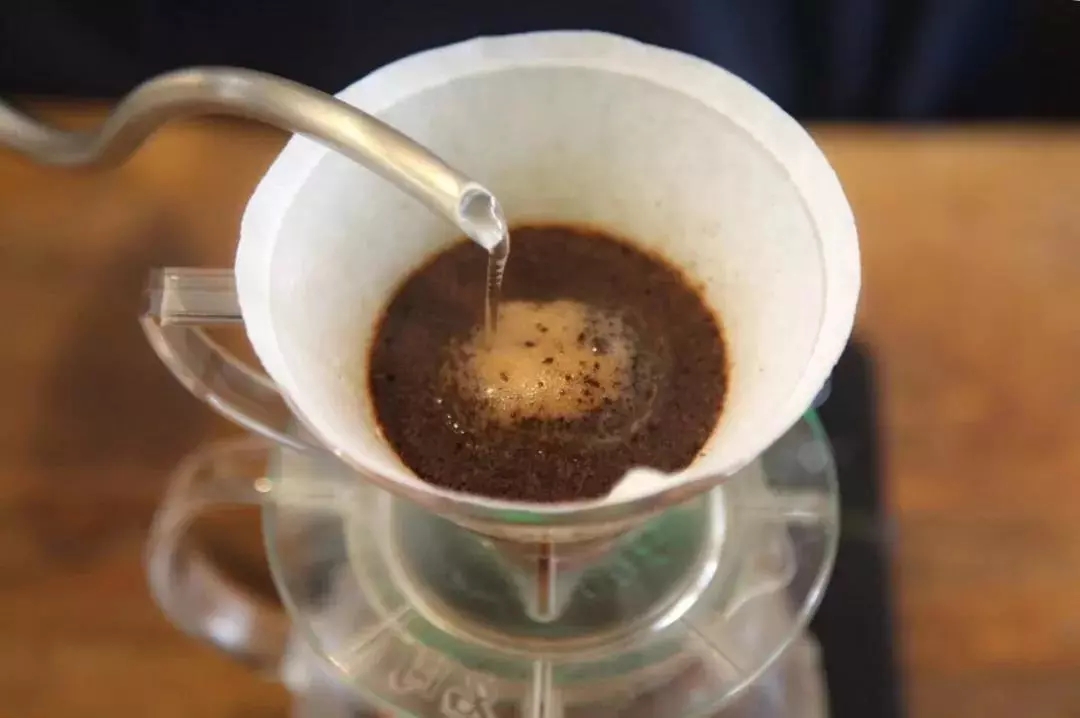
Technique: 30 grams of water steams for 30 seconds, water injection to 122 grams for segmentation, water level drops to expose the powder bed when the water continues to inject water to 225 grams, such as filter cup water flow after removing the filter cup.
Flavor: On the palate, distinct cocoa, herbal and nutty aromas with woody and astringent notes, caramel, smoky and woody notes on the finish.
Xiao Bian weighed the weight of coffee liquid with the tail section retained and the tail section removed respectively, injected 225 grams of water, the weight of coffee liquid with the tail section removed was about 176 grams, while that with the tail section retained was about 194 grams, and the liquid weight difference was 18 grams.
[Summary]
The comparison found that the three cups of coffee that retained the tail section would more or less have some woody flavor.
Although the difference between retaining the tail section and removing the tail section is only a dozen grams of coffee liquid, the process of flowing down the water will also extract the coffee powder bed, and when the coffee is extracted to the tail section, most of them are only woody and sweet. The extracted coffee liquid will dilute the original coffee liquid. If the tail section is too much water, it is easy to dilute the head. Although sweet, it has a distinct woody flavor.
This is especially true in deep baked beans. Deeply roasted beans have a softer texture and are easier to extract, leaving water in the latter stages easier to over-extract.
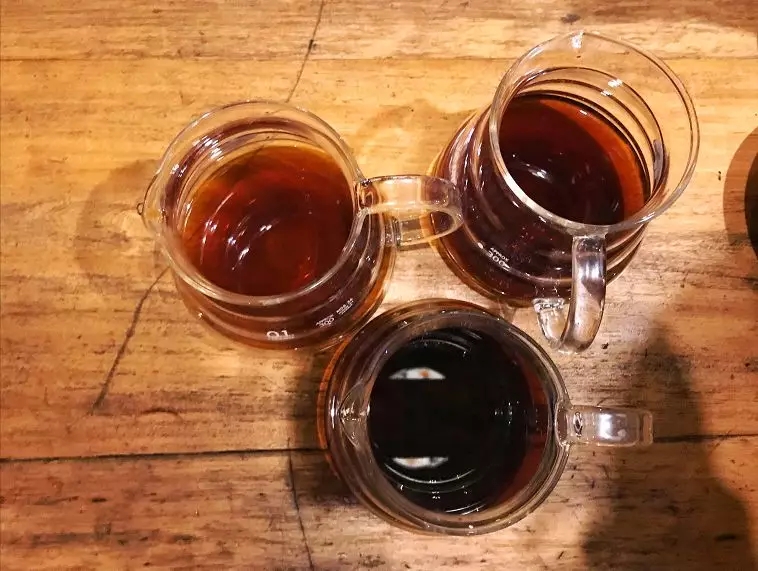
So is it better to keep the tail or remove it? Xiao Bian thinks there is no absolute, the specific still depends on each person's technique, parameters and other factors to determine ~ If you keep the coffee liquid at the end of brewing, you will feel that you don't like the taste, then you may wish to remove the end and try?
Important Notice :
前街咖啡 FrontStreet Coffee has moved to new addredd:
FrontStreet Coffee Address: 315,Donghua East Road,GuangZhou
Tel:020 38364473
- Prev
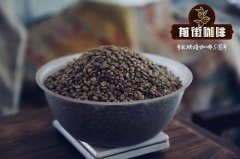
Why does Italian style need sharpening? Teach you how to grind quickly
For information, please pay attention to the coffee workshop (Wechat official account cafe_style) Caf é to adjust the grinding degree every day, some even once in a few hours, if there is a strict requirement on the extraction results, it should be adjusted again every 5 hours, because beans are changing at every moment, and even air pressure, temperature and humidity will have an impact on the extraction. And Italian high pressure
- Next
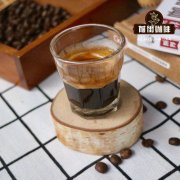
Environmental upheaval expands the crisis! The mysterious "coffee camel spore rust" that could destroy the coffee industry.
For more information on coffee beans, please follow the Coffee Workshop (official Wechat account cafe_style) Writing = Gu Xiaozhe (PhD in fungal Cell Biology, University of Edinburgh, UK) drawing = Lin Zhe Wei Coffee, native to the rainforest of southwestern Ethiopia in Africa, may have been used for medicinal and religious purposes for the first time, but it is refreshing and refreshing.
Related
- Beginners will see the "Coffee pull flower" guide!
- What is the difference between ice blog purified milk and ordinary milk coffee?
- Why is the Philippines the largest producer of crops in Liberia?
- For coffee extraction, should the fine powder be retained?
- How does extracted espresso fill pressed powder? How much strength does it take to press the powder?
- How to make jasmine cold extract coffee? Is the jasmine + latte good?
- Will this little toy really make the coffee taste better? How does Lily Drip affect coffee extraction?
- Will the action of slapping the filter cup also affect coffee extraction?
- What's the difference between powder-to-water ratio and powder-to-liquid ratio?
- What is the Ethiopian local species? What does it have to do with Heirloom native species?

